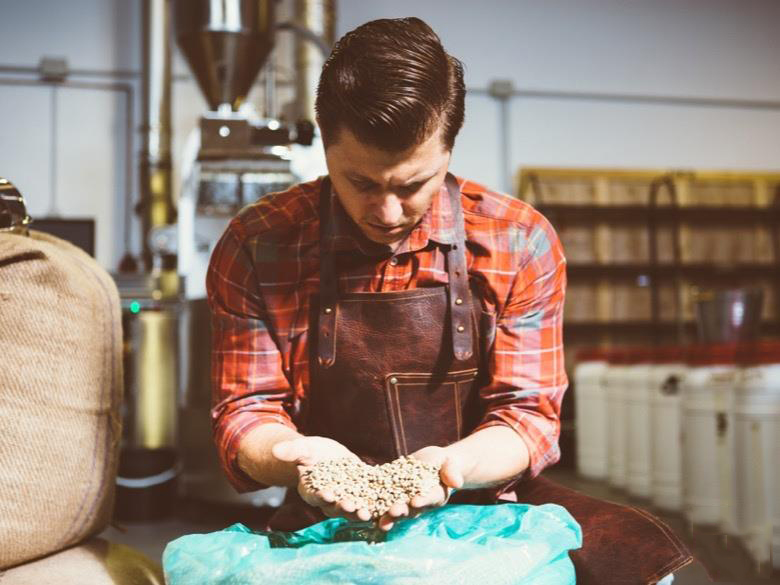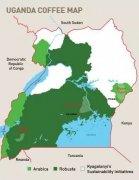Bean hunter's "bean selection notes"! There are four criteria for selecting coffee beans.
Professional coffee knowledge exchange more coffee bean information please follow the coffee workshop (Wechat official account cafe_style)
Coffee raw bean is a kind of agricultural product, that is to say, even if the beans in the same manor are affected by a variety of subjective and objective conditions, the quality of each batch may not be the same. How to avoid buying raw beans into random or similar gambling has always been a challenge for professional bean hunters / raw bean buyers. Bean hunters must solve problems year after year with skilled communication skills, quality judgment and coping skills. Avoid uneven quality and ensure that the best raw beans are bought at a reasonable price.

The purchasing process is full of variables. If the buyer spends a lot of money but buys poor quality raw beans, there are no more than the following situations:
First, the test sample is not in conformity with the goods arrived.
Second, blind purchase! Buyers do not do cup test beans at all, or only rely on second-hand flavor information to decide to purchase.
Third, buyers often think that the quality of raw beans should be the commitment and responsibility of suppliers, often only confirm the quality at the moment of delivery (sample inspection), but ignore the preservation details after the goods, resulting in quality problems after inventory.
Small batches of bean bakers must keep in mind: four pillars of raw bean quality
In Taiwan's coffee circle, like most emerging Asian markets, small baked beans have become mainstream in recent years. In Taiwan, for example, there are about 3,000 bakeries that use small bean roasters, most of which start with 1 kg small bean roasters, unlike coffee makers in the United States who generally use 15 kg bean roasters as the mainstream. This baking scale is also reflected in Taiwan's bean baker's purchasing strategy of low purchase quantity and high diversity of beans, but in practice, if there is no certain amount of purchase, it is impossible to establish a direct relationship procurement model with raw bean sources, and it is very difficult for small bean merchants to have the opportunity to conduct pre-shipment samples and PSS cup tests (Pre Shipping Sample) in the country of origin.
However, omitting the "inspection and cup test sample" step is very dangerous for the purchase of raw beans. No matter how well-known and popular raw beans are, issuing an order to buy beans without cup testing or quality inspection will become the so-called "blind purchase".

As a result of blind purchase, it is easy to have different perceptions of quality between the two sides, and the buyer disputes with the raw bean merchants because the quality of the goods is not as good as expected. It is true that there is trust in business, but the quality of raw beans is easily affected by the external environment, and any link may lead to changes in quality, so the cup test and inspection of raw beans before purchase is very important.
I suggest that every raw bean buyer can refer to the "four pillars of raw bean quality" as the check list before making a purchase decision, confirming that he has implemented the relevant work in every link, which can naturally reduce the tragedy of wrong purchase.
The first pillar is cup test identification, and the second pillar is the condition of raw beans. The real-time quality of raw beans was examined at the main time point, and the samples must be tested, and the two were cross-compared. The following tools and testing standards are also applicable to every link after purchase.
Necessary tools: density and moisture content tester
Essential actions: visual appearance, color and smell of raw beans
Must do cup test: Cup test and record of small amount of baked samples
Although defects or defects in the appearance of raw beans can be observed visually, how much impact does the defects have on the quality? Just imagine, if you report to the supplier that there is something wrong with a certain batch of beans, the other person will certainly ask: how is the flavor? Accurate description can help communication to find the problem point. No matter looking for beans, sharing in groups or buying beans from suppliers, there must be someone in the team responsible for cup testing and quality identification.
I have a complete introduction to the details of the cup test in the second part of my last book, the Bean Hunter. The main items to check the status of raw beans include:
Freshly processed samples from the production area at the beginning of the season, samples from the main harvest period, mature samples, key pre-export samples PSS, arrival testing, warehouse storage testing, baking product testing; even comparing new beans and existing beans (Present Crop) from the same source, or earlier old beans (Past Crop) tests, confirming the consistency of sources in the new and old years, and "complaint batches" tests with quality problems. The above work belongs to the quality discrimination of raw beans at different time points, referred to as the status of raw beans!
The transportation process is the third pillar. In particular, shipping or hot climate and high humidity transportation often lead to abnormal quality. Bean hunters must find out whether the quality has slipped due to transportation before they can conclude that suppliers are required to improve or switch to other bean sources.
The comparison and inspection of raw beans that have just been delivered are very important, especially for self-bakers who use the "menu to buy raw beans". You don't know how long raw beans stay in the country of origin before arriving at the supplier's warehouse. although low-temperature storage has become the standard storage environment for high-priced raw beans, there is a lot of unknown information about how long the purchase batches stay in the supplier warehouse and the situation of raw beans before shipment. If there are any anomalies, you must give back your opinions and file them for follow-up or future repurchase.
The storage environment is the fourth pillar. In Taiwan and most Asian regions, it is extremely hot and humid in summer, and the quality of the best raw beans will decline due to the storage environment, and it is not easy to maintain the quality of raw beans. When coffee farmers deliver excellent raw beans, it is very important for buyers to control the temperature and humidity after they take over. We must work together from the source to the bean warehouse.
When there is a problem with the quality of raw beans, the process of extrapolating the cause through cup testing is very much like a jigsaw puzzle, whether it is harvesting, post-processing or other processes, a piece of the jigsaw puzzle will fall from east to west, if it falls into the edges and corners of the whole jigsaw puzzle, as far as commercial beans are concerned, the quality difference is not big, the original commercial beans have reasonable shortcomings, but as long as high-quality beans are not required and maintained, the quality will certainly have a sense of difference. Eventually, it will be reflected in the customer's word of mouth. If there are any anomalies, you must give back your opinions and file them for follow-up or future repurchase. In view of the improvement of the storage environment, cup testing and recording information must be established for the raw beans in the new environment for quality inspection and comparison in subsequent seasons (at least once).
Source: bean Hunter 2, African curiosity of the International Coffee Review, Music Culture Publishing
END
Important Notice :
前街咖啡 FrontStreet Coffee has moved to new addredd:
FrontStreet Coffee Address: 315,Donghua East Road,GuangZhou
Tel:020 38364473
- Prev

The flavor of Yega Shirley Fischer.
Professional coffee knowledge exchange more coffee bean information please follow the coffee workshop (Wechat official account cafe_style) Kochere is located in a small production area about 25 kilometers south of Yekascheville. The coffee beans are harvested from locally grown coffee groves and are made up of small coffee farmers who have a large number of coffee farmers. These small farmers have an average of about 1.
- Next

Introduction to the flavor characteristics of coffee treated by anaerobic fermentation and solarization in the Wenzori Mountains of Uganda
Professional coffee knowledge exchange more coffee bean information please follow Coffee Workshop (Wechat official account cafe_style) Uganda Wenzori Mountains country: Uganda production area: Wenzori Mountains altitude: 1600-1800 m treatment method: anaerobic treatment Sun varieties: SL14SL28 Origin introduction | Uganda is located at the source of the Nile River, which is not dependent on in Africa.
Related
- Detailed explanation of Jadeite planting Land in Panamanian Jadeite Manor introduction to the grading system of Jadeite competitive bidding, Red bid, Green bid and Rose Summer
- Story of Coffee planting in Brenka region of Costa Rica Stonehenge Manor anaerobic heavy honey treatment of flavor mouth
- What's on the barrel of Blue Mountain Coffee beans?
- Can American coffee also pull flowers? How to use hot American style to pull out a good-looking pattern?
- Can you make a cold extract with coffee beans? What is the right proportion for cold-extracted coffee formula?
- Indonesian PWN Gold Mandrine Coffee Origin Features Flavor How to Chong? Mandolin coffee is American.
- A brief introduction to the flavor characteristics of Brazilian yellow bourbon coffee beans
- What is the effect of different water quality on the flavor of cold-extracted coffee? What kind of water is best for brewing coffee?
- Why do you think of Rose Summer whenever you mention Panamanian coffee?
- Introduction to the characteristics of authentic blue mountain coffee bean producing areas? What is the CIB Coffee Authority in Jamaica?

